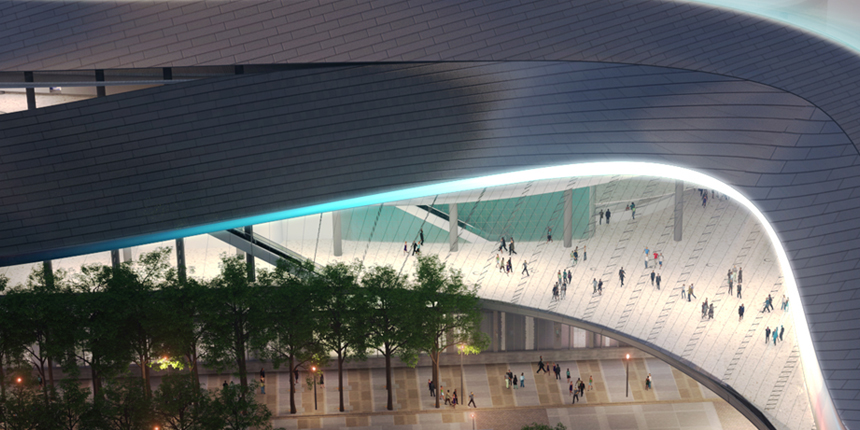
(
https://s3.amazonaws.com/corewebsite...ton_facade.jpg)
The Advanced Computational Modeling (ACM) Group supported 360 Architecture with the design of a series of curvilinear glass façade elements for Rogers Place (future home of the NHL Edmonton Oilers in Alberta, Canada). 360 contracted ACM to perform the technical modeling, surface rationalization, and warpage analysis to allow the glass apertures to be built using cold-bent, quadrangular, insulated glass panels.
360’s design intent was to subdivide the apertures into a pattern of parallelogram [glass] panels. The main question we were trying to answer for each aperture is: What are the ranges of angles and panel sizes that result in buildable (meaning that each piece is flat enough under our failure criteria) configurations? The driving design parameters are: vertical mullion angle, horizontal mullion angle, vertical length, and horizontal width.
In recent years, with generic algorithms gaining popularity for exploration of multi-variable-driven design spaces, this problem would have been solved as a very computationally heavy and slow ‘top down approach’ : Design a good surface, and slice it up in such a way that the pieces are flat enough to build. While this workflow is effective, it is extremely compute-intensive to optimize a ‘good surface’; it takes a long time to evolve one good answer, and you can only investigate one set of design parameters at a time.
So, instead, we thought of an innovative way to address the challenge from the bottom up: Using Kangaroo, a physics simulation plugin for Grasshopper, ACM developed the tools we needed to drive the form-finding process based on our constraints, and to check for fitness based on our design performance criteria on top of Kangaroo and Grasshopper. The video below shows a partial run of one of the apertures using Kangaroo as a platform, along with our custom toolset.
The planarity and range of panel sizes were improved dramatically, and as the approach was much less compute-intensive, we were able to explore entire ranges of solutions in very little time.
Along with the ability to specify the main design parameters described above, the bottom up approach allows for the application of planarization and smoothing forces to the panels in the system. All of these forces act concurrently – and in some cases unpredictably – on the system during the form finding process, allowing us to weight our constraints based on their systems level importance.
http://core.thorntontomasetti.com/edmonton-arena/